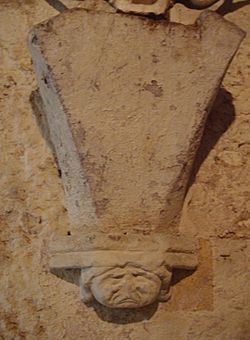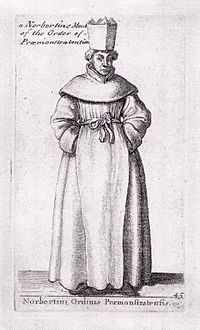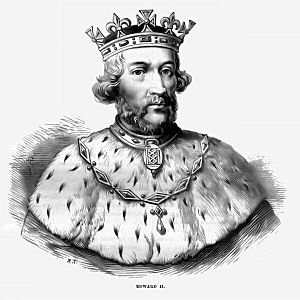Langdon Abbey facts for kids

Carved stone corbel, part of the remains of the monastic cellars at Langdon Abbey
|
|
| Monastery information | |
|---|---|
| Order | Premonstratensian |
| Established | circa 1192 |
| Disestablished | 1535 |
| Dedicated to | the Blessed Virgin Mary and St Thomas the Martyr |
| People | |
| Founder(s) | Sir William de Auberville |
| Important associated figures | Edward II |
| Site | |
| Location | West Langdon, Kent, England |
| Visible remains | Monastic cellars and 12th-century Ice House |
| Public access | No , Occupied |
Langdon Abbey was a Premonstratensian abbey located near West Langdon, Kent, in England. An abbey is a special type of monastery where monks or nuns live and worship. Today, you can still see parts of the abbey's old cellars, which are like underground rooms, beneath a house built in the 1500s. There are also small remains of a 12th-century ice house.
Contents
How Langdon Abbey Started
Langdon Abbey was founded around 1192. It was started by a knight named William de Auberville (the elder). His wife, Matilda, whose father was Ranulf de Glanville, helped him. Ranulf de Glanville was a very important judge for King Henry II.
William de Auberville had also helped start another Premonstratensian abbey called Leiston Abbey in Suffolk. Langdon Abbey was considered a "daughter house" of Leiston Abbey. This means it was like a new branch or extension of the older abbey. The abbey was dedicated to the Blessed Virgin Mary and St Thomas the Martyr. Sir William also gave the church of St. Mary in Walmer to the abbey. This church stayed with the abbey until it was closed down much later.
Later, the right to support and protect Langdon Abbey passed down to Nicholas de Crioll. He was the great-grandson of William de Auberville.
Royal Visits and Abbey Life
In 1325, King Edward II stayed at Langdon Abbey to recover after he became ill on his way to Dover.
In 1348, the Abbot (the head monk) and the monks of Langdon were given special permission to build defenses. This permission was called a "licence to crenellate." It allowed them to add features like battlements, which are the notched walls often seen on castles.
By 1491, Langdon Abbey was doing very well. Reports from that time say the abbey had a lot of land, about 300 acres (121 hectares), used for growing grain. They also had a good supply of animals.
When the Abbey Closed Down

In 1535, Langdon Abbey was one of the first religious houses to be closed down by King Henry VIII. This was part of a big event called the Dissolution of the Monasteries. At that time, the abbey's yearly income was about £56.
When the abbey was being closed, a special official named Dr. Leyton visited it. He sent a report to Cromwell, who was a powerful advisor to King Henry VIII. Dr. Leyton reported that he found the abbot with a woman, which was against the rules for monks. The abbot was arrested and taken to prison in Canterbury. The woman was also taken to Dover.
What Happened After the Abbey Closed?
After the abbey was closed, its land was bought by John Master. He passed away in 1588. His son, James Master, then took over the property. James Master built a new house on the site of the old abbey. His oldest son, Sir Edward Master, became a very important official in Kent in 1639.
The house built on the abbey's site still stands today. Parts of it date back to the 1500s. The monks' old cellar, with its original arched ceilings, is still there underneath the house. In the 1800s, a family named Coleman lived in the farmhouse for many years. Records from 1881 show that Richard Coleman was a significant farmer at Langdon during that time.
Images for kids



